Discrimination
of
sex in the Asian lorises
See also determination
of reproductive state
Slender lorises (L. tardigradus, L.
lydekkerianus)
.
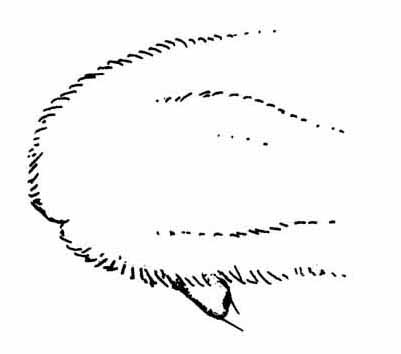 |
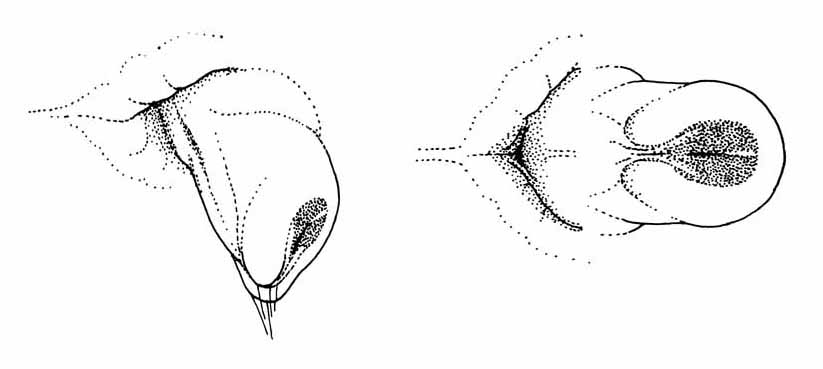 |
 |
Lateral vew on the
hindquarter of a L.
l. nordicus female.
The clitoris is visible; there is no prominent scrotum. |
Loris: lateral and
ventral view on
the external female genitalia.
In slender lorises, here L. l. nordicus, the
genital tubercle
(clitoris) of females shows a bilaterally symmetrical
shape, and on the
caudal side, above the vaginal cleft, a somewhat
distinct-coloured central
zone is visible |
Visibility of the vaginal
cleft
In red slender lorises, here probably a L. t.
tardigradus or
intermediate tardigradus-grandis form, the vaginal
cleft may be
visible (left) or during anestrus "sealed" and invisible
(right). In the
L.
t. nordicus at Ruhr-University, an apparently sealed
vagina was not
observed. |
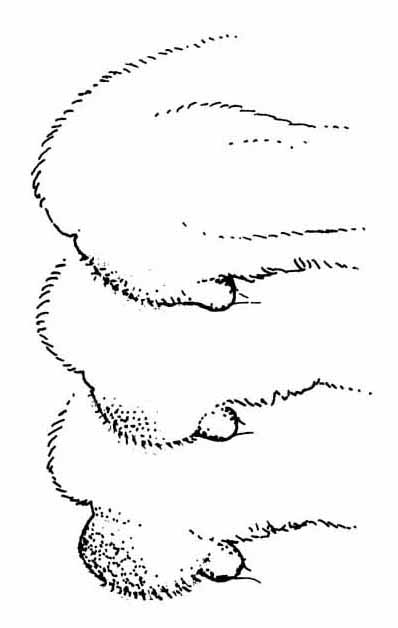 |
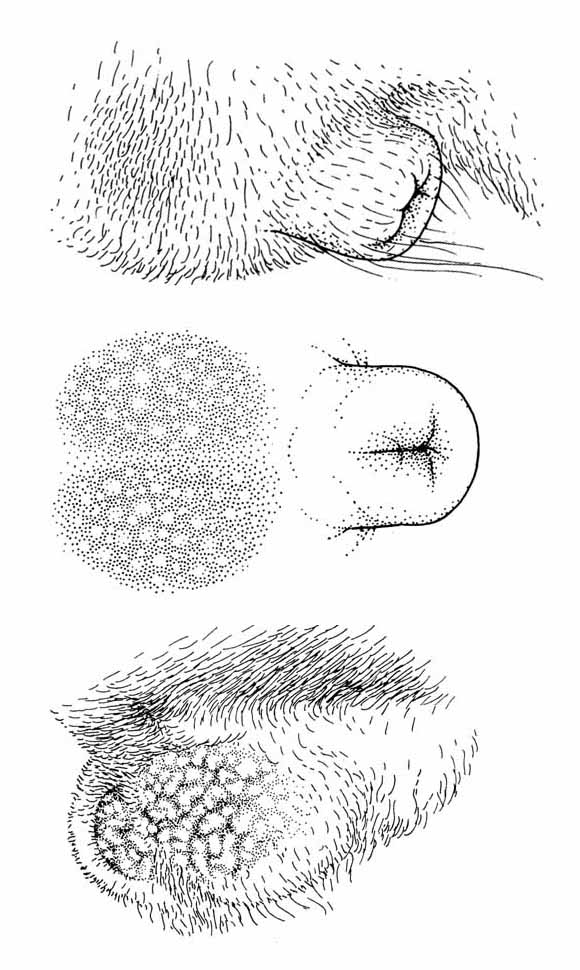 |
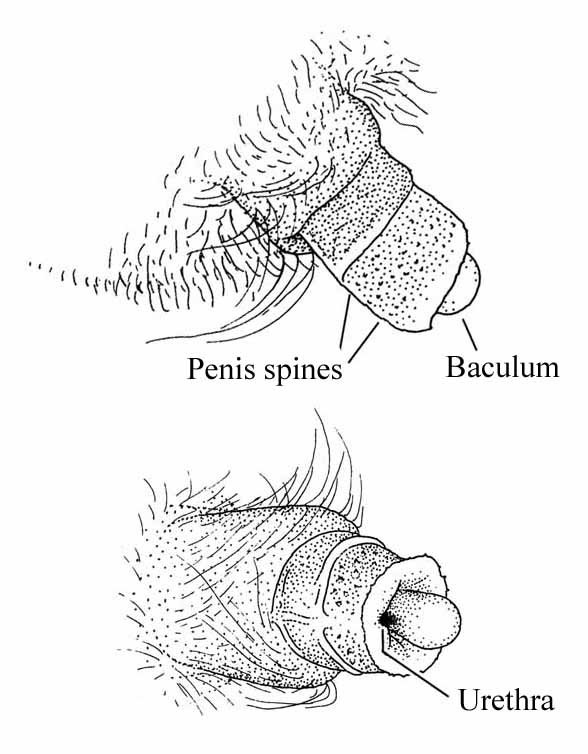 |
Lateral vew on the
hindquarter of L. l.
nordicus males
Above: with testes partly inguinal, scrotum not very
prominent.
Middle: testes scrotal.
Below: testes scrotal and somewhat enlarged. The question
whether this
condition is related to reproductive activity is
discussed; in the L.
t. nordicus of Ruhr-University it seems rather
related to high ambient
temperature, large scrotal testes emitting more heat.
In the wild, changes from scrotal to inguinal testes were
observed
every night in L. l. lydekkerianus and L. l.
nordicus (Nekaris
2003) |
External genitalia of a L.
l. nordicus
male.
Above: lateral view.
Middle: ventral view, drawn without hair, showing the
areas with pigmented
scrotal skin behind the penis.
Below: fully scrotal, enlarged testes (compare with left
figure), lateral-caudal
view, showing the pigment pattern on the scrotal skin
According to Nekaris (2003), in a wild L. t.
tardigradus male
caught three days after pursuit of a estrous female, the
testes were scrotal,
the scrotum skin was covered with a pigmented honeycomb
reticulated pattern
(pigmented parts raised from the surrounding skin) and
exuded a pungent
smelling sticky fluid, as described for pottos
(Charles-Dominique) and
L.
t. tardigradus (Osman Hill 1953) |
Some details of the male
genitalia of L.
l. nordicus
Above: lateral; below: ventral view. The glans penis is
covered with
spines; the questions whether the shape of spines may
indicate taxonomic
differences is still unsolved in Loris. At the tip
of the glans
penis, the round tip of the baculum (penis bone) is
visible. |
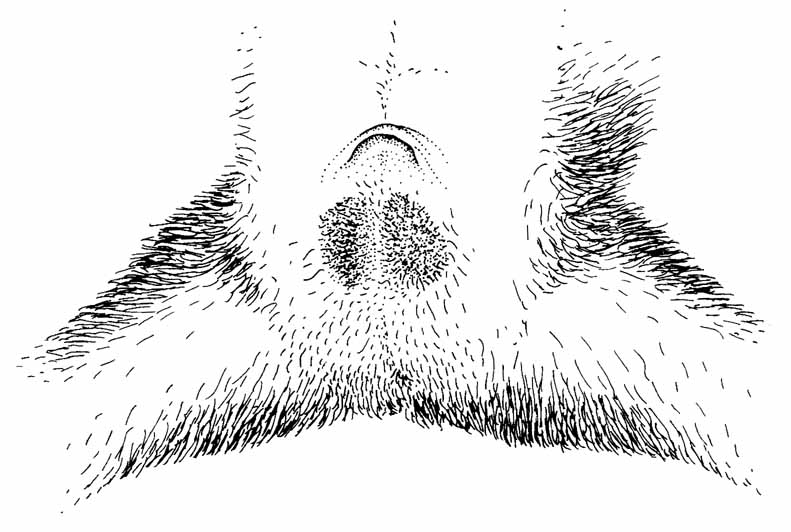 |
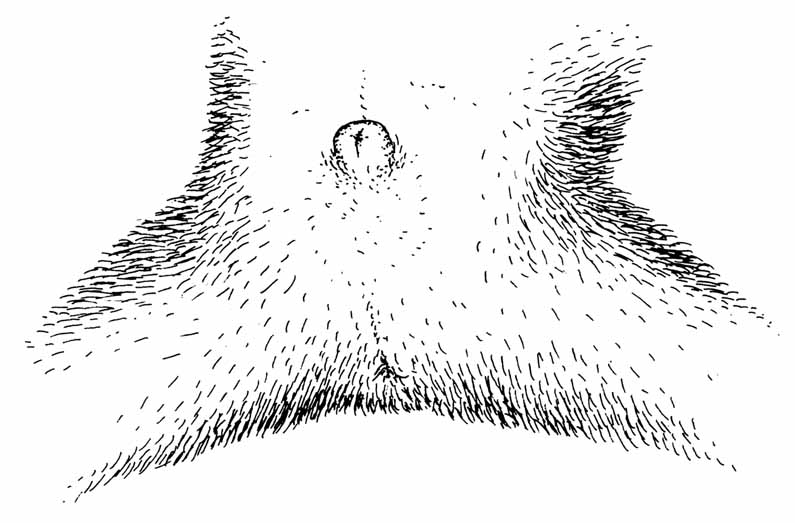 |
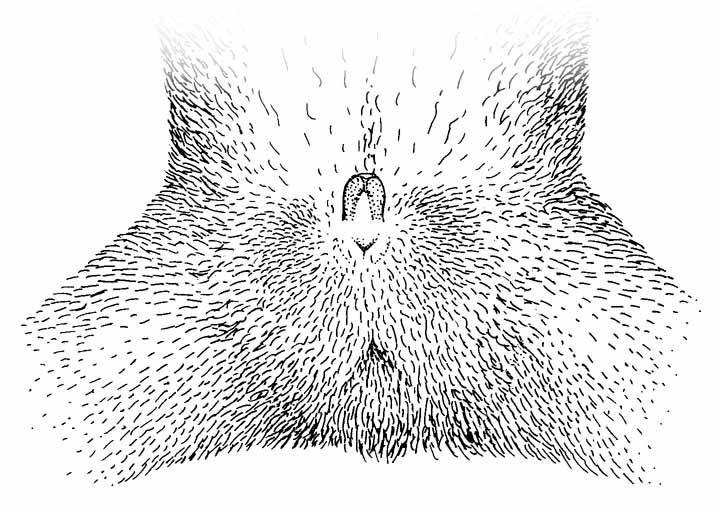 |
| Adult L. l. nordicus
male, genital region
with visible scrotal pigmentation |
Subadult L. l. nordicus
male, scrotal
still unpigmented, testes inguinal: easily mistaken for a
female |
In some slender loris females,
particularly in
the red form L. t. tardigradus, a dark fur pattern
closely resembling
the pigmentation of male scrotum may be present |
Discrimination of sex in slender loris neonates
.
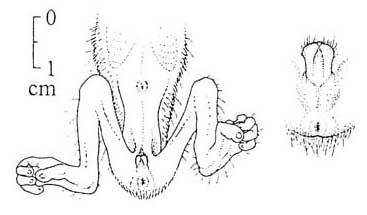 |
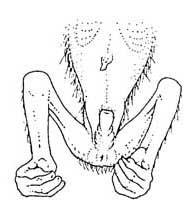 |
| For sexing neonates, the shape
of the genital
tubercle (penis, clitoris) is most helpful. In female Loris
neonates
(left and enlarged detail), the future vaginal cleft is
hardly visible,
but the clitoris shows the same bilaterally symmetical
shape as in the
adult female (see figures above). |
Right: a newborn male. The
scrotum is inconspicuous,
the tip of penis resembles that of adult males (see above) |
In Nycticebus, the female clitoris is
characterized by
a little cranio-caudally orientated cleft in the tip, which is
already
well visible in neonates (H. Ribjer, pers. comm.). As in Loris,
in females in addition there is also a distinct symmetrical tract
on the
caudal side of the clitoris
Lesser slow lorises (Nycticebus pygmaeus)
.
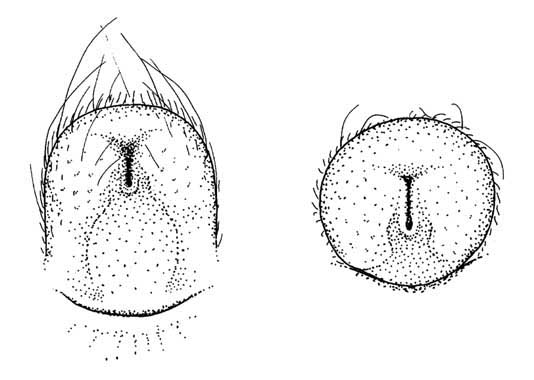 |
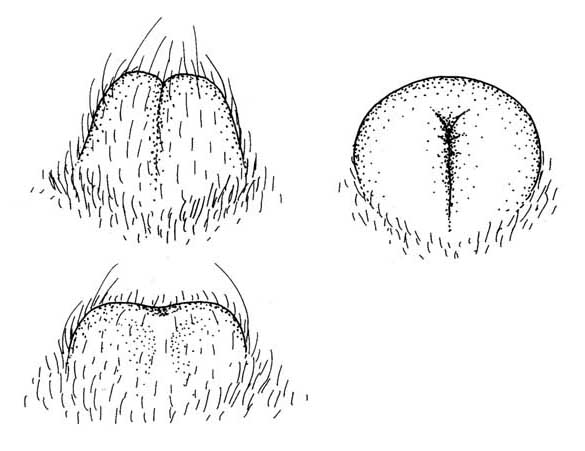 |
As in Loris,
wrong sexing
may occur because penis and clitoris are superficially
similar in size,
shape and colour.
In females, during anestrus or pregnancy, the vagina
usually is sealed.
N. pygmaeus shows a breeding
seasonality,
and in adult males the genitalia show seasonal changes,
testes increase
in size during late summer. The skin of the scrotum is
reticulated and
seasonally becomes dark grey. |
| Female external genitalia,
ventral and apical
view: vaginal cleft (in this figure not sealed); the tip
of the clitoris
is characterized by a cleft on the tip (opening of the
urethra) and, as
in Loris, bilateral symmetry of the clitoris |
N. pygmaeus male: the
shape of the pit
with urethral opening on the tip of penis may be a cleft,
too, but it is
of more variable shape than in the female. |
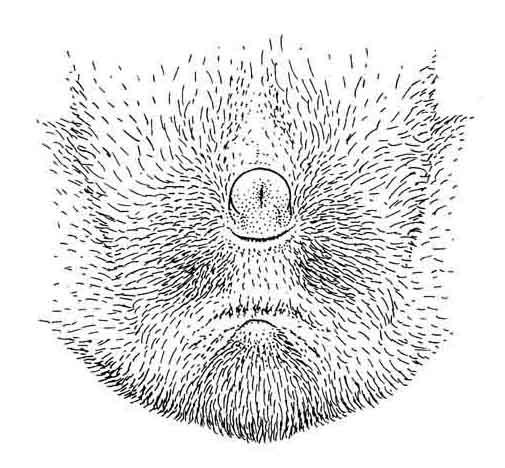 |
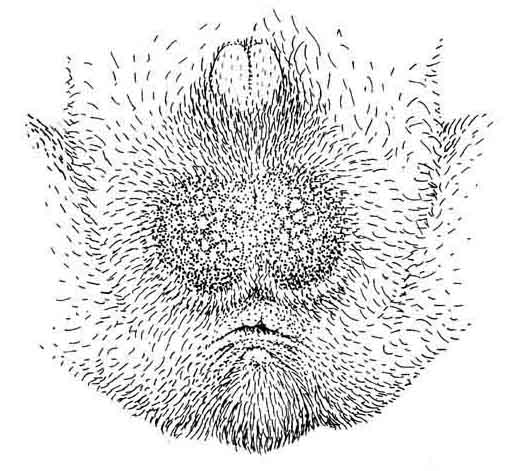 |
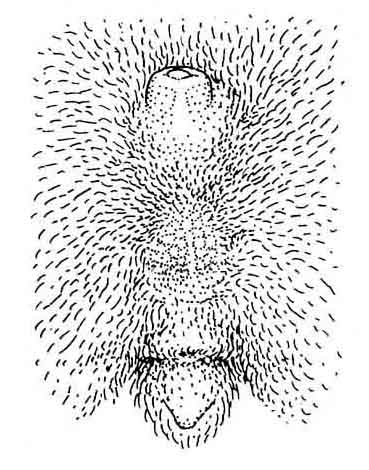 |
| Ventral view on the external
genitalia of an
adult N. pygmaeus female |
Adult N. pygmaeus male
with scrotal testes.
The scrotum has a median ridge |
Subadult male with
inconspicuous scrotum |
Slow lorises (Nycticebus coucang, N.
bengalensis, N.
(c.) javanicus)
.
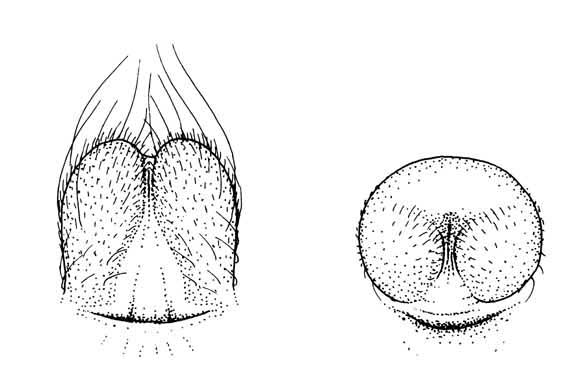 |
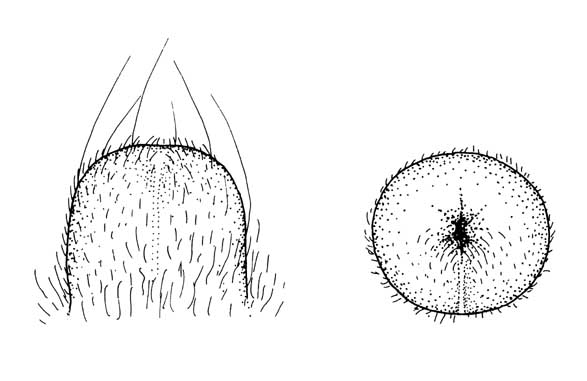 |
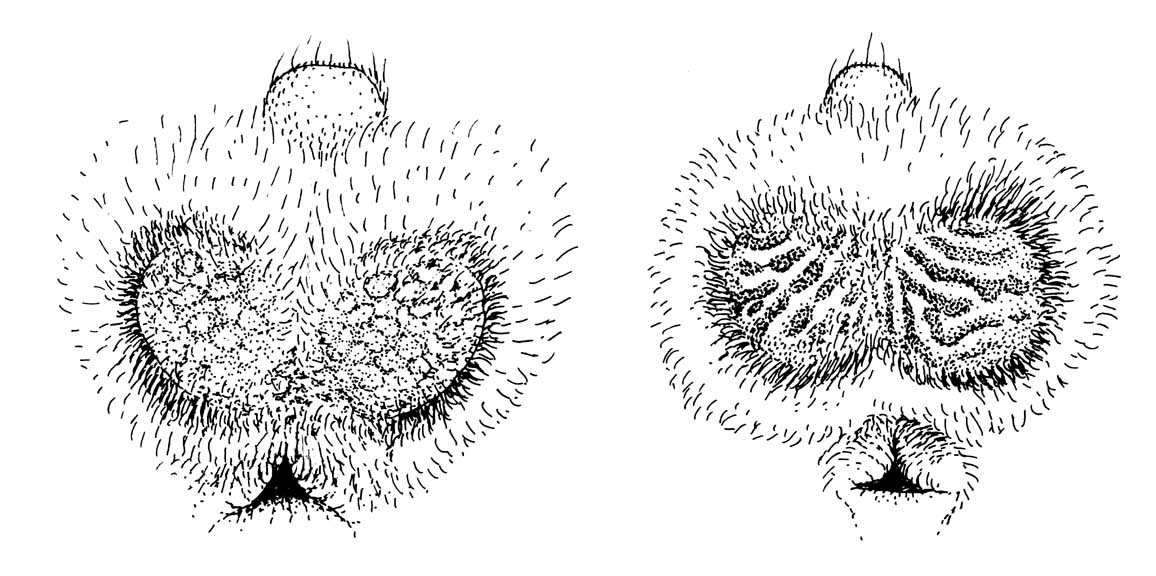 |
| Female external genitalia of N.
coucang:
clitoris, vaginal cleft (in this figure not sealed),
caudal and apical
view. |
Male N. coucang: penis |
Different scrotal skin
patterns in two Malaysian
N.
c. coucang from one wild population, redrawn from
photos by F. Wiens |
Sources for the Asian lorises: Loris tardigradus:
data
from Ruhr-University and Osman Hill, 1953; animals belonging to
the red
subspecies obtained from Frankfurt Zoo. Nycticebus pygmaeus:
drawings
based on photos by Helena Fitch-Snyder, Rüdiger Lippe, Bernhard
Meier,
Helga Schulze and live animals in the care of R. Lippe,
information partly
based on the reproduction
chapter
in Fitch-Snyder et al., loris husbandry manual. Nycticebus
coucang:
drawings based on photos by Frank Wiens and Annette Zitzmann (wild
N.
c. coucang, Malaysia), Helena Fitch-Snyder and Karen
Weisenseel.
Discrimination
of
sex in the African pottos
In the potto, wrong sexing may easily occur because of the
presence
of a female "pseudoscrotum" with a tessellated area of glandular
skin which
resembles the scotum and may even be larger. The organ apparently
plays
a role in olfactory communication (see Manley 1976).
Pottos (Perodicticus potto)
.
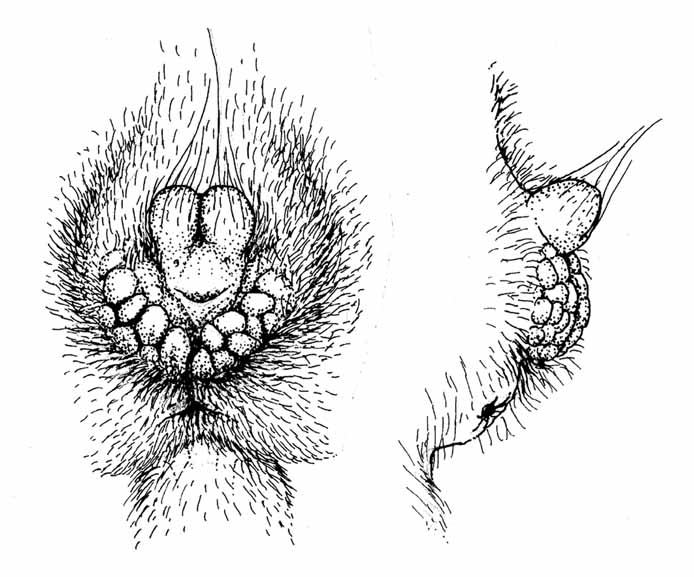 |
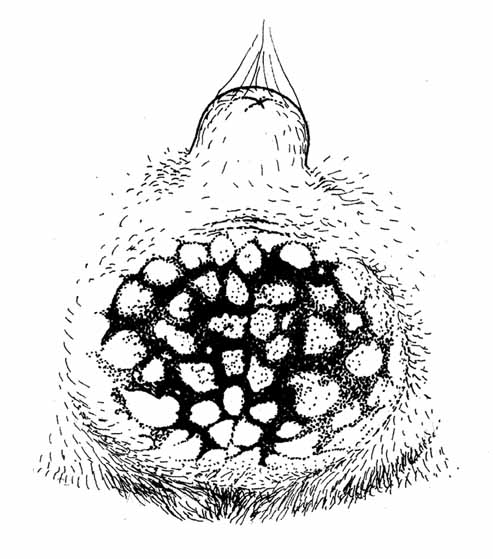 |
| External genitalia
of a female potto
with "pseudoscrotum" and glandular area superficially
resembling the scrotal
skin of males. |
Male genital with tessellated
glandular scrotal
skin. |
Angwantibos (Arctocebus sp.)
.
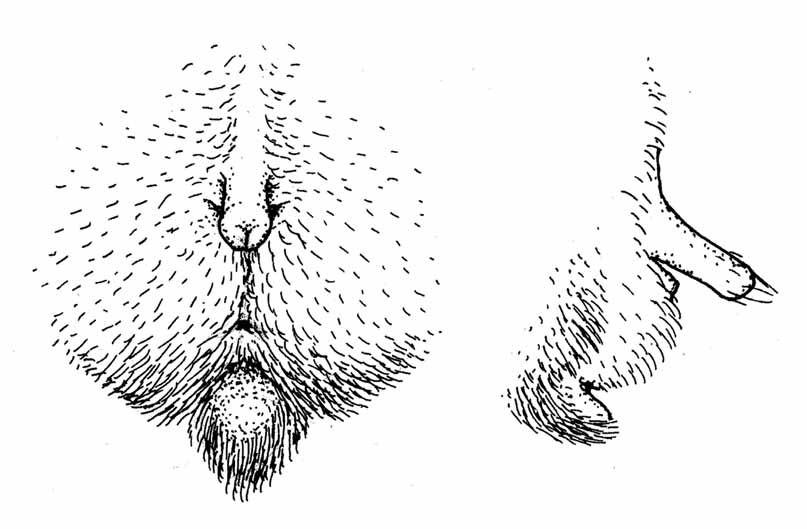 |
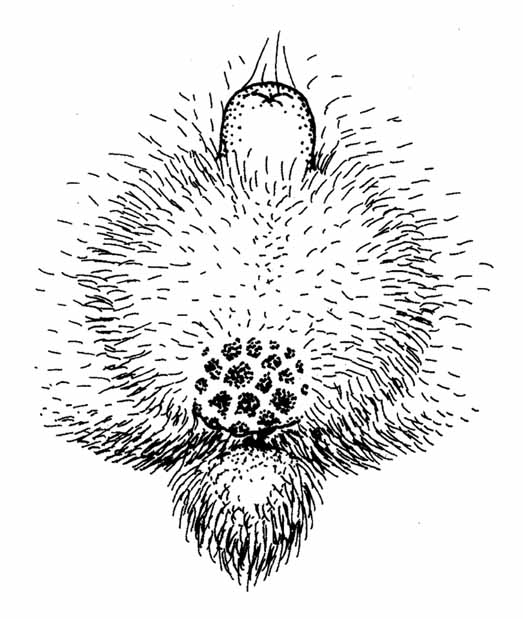 |
| Female external genitalia of A.
c. calabarensis.
In Arctocebus,
too, a small
area of tessellated glandular skin in females was
reported (Manley 1976),
but it seems to be inconspicuous. |
Male genital region of A.
c. calabarensis
with glandular area. |
Sources for African
pottos: Perodicticus
potto: drawings based on Osman Hill 1953, Sanderson 1940,
Charles-Dominique
1966 and 1977 and Manley 1966 and 1976. Arctocebus:
based on Osman
Hill 1953, Sanderson 1940 and photos by Simon Bearder. .
References:
Charles-Dominique, P.,
1966:
Glandes préclitoridiennes de Perodicticus potto. Biol.
Gabon. 2: 355-359
Charles-Dominique, P.,
1977:
Ecology and Behavior of Nocturnal Primates. Prosimians of
Equatorial West
Africa, Duckworth, London.
Osman Hill, W. C.,
1953:
Primates: Comparative anatomy and taxonomy. Vol. I,
Strepsirhini. Edinburgh
University Press, Edinburgh.
Sanderson, I. T.,
1940: The
mammals of the north Cameroon forest area. Transactions of the
Zoological
Society of London 14: 623-725
Manley, G. H., 1966:
Reproduction
in lorisoid primates. Symposia of the Zoological Society of
London 15:
439-509
Manley, G. H., 1976:
Functions
of the external genital glands of Perodicticus and Arctocebus.
Pp. 313-329 in: Prosimian Behaviour, Martin, R.D.; Doyle, G. A.;
Walker,
A. C. (eds.), Duckworth, London.
Nekaris, K. A. I.,
2003.
Observations on mating, birthing and parental care in three taxa
of slender
loris in India and Sri Lanka (Loris tardigradus and Loris
lydekkerianus).
Folia Primatologica Supp. 74 (S. Gursky and K. A. I.
Nekaris, eds.):
312-336.
Privacy policy / Datenschutz
Back to the top of this page
http://www.lortis-conservation.org/database/
Lorises
and pottos:
species, subspecies, local populations |
Last
amendment: 20
April 2004
|






















